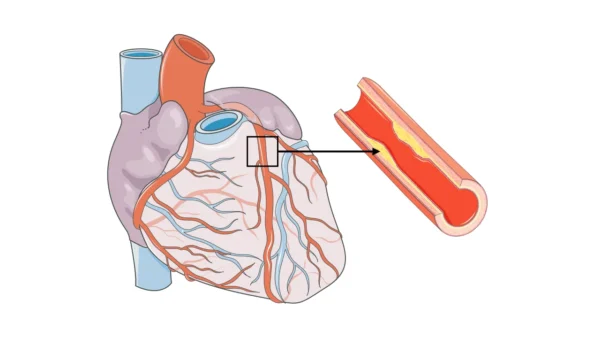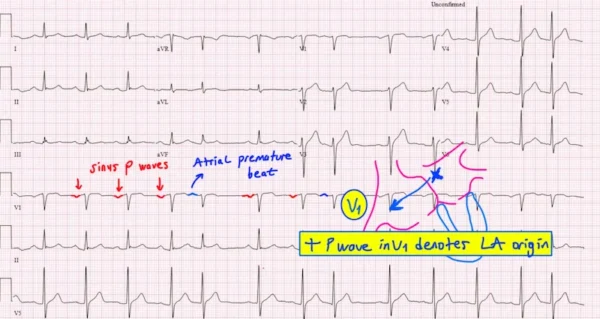A stroke occurs when blood flow to part of the brain is suddenly interrupted, depriving brain tissue of oxygen and nutrients. Within minutes, brain cells begin to suffer permanent injury. Stroke is a medical emergency, and rapid treatment is critical to limit brain damage and improve recovery.
Stroke is one of the leading causes of death and long-term disability worldwide. Early recognition and immediate medical care can be life-saving and disability-reducing.
What Happens During a Stroke?
The brain relies on a constant supply of oxygen-rich blood. When this supply is disrupted—either by a blocked blood vessel or bleeding into the brain—affected brain cells stop functioning properly and may die.
The effects of a stroke depend on which part of the brain is involved and how quickly blood flow is restored.
Types of Stroke
Ischemic Stroke
Ischemic stroke is the most common type and occurs when a blood vessel supplying the brain is blocked, usually by a blood clot.
The clot may form locally on an atherosclerotic plaque in a brain or neck artery, or it may travel from elsewhere in the body—most commonly the heart. Heart rhythm disorders such as atrial fibrillation are an important source of embolic stroke.
Hemorrhagic Stroke
Hemorrhagic stroke occurs when a blood vessel ruptures, causing bleeding into or around the brain. This type of stroke is often associated with long-standing high blood pressure, aneurysms, or vascular malformations.
Bleeding increases pressure inside the skull and damages surrounding brain tissue.
Transient Ischemic Attack (TIA)
A transient ischemic attack, often called a “mini-stroke,” is caused by a temporary interruption of blood flow to the brain. Symptoms resolve completely within a short time, but a TIA is a serious warning sign and indicates a high risk of future stroke.
Common Symptoms of Stroke
Stroke symptoms usually appear suddenly and may include:
- Sudden weakness or numbness of the face, arm, or leg, especially on one side
- Difficulty speaking or understanding speech
- Sudden vision loss or visual disturbance
- Dizziness, loss of balance, or coordination problems
- Sudden severe headache with no known cause
Because symptoms vary, recognizing early warning signs is essential.
Recognizing Stroke: The FAST Rule
A simple way to recognize stroke is the FAST method:
- Face: Facial drooping on one side
- Arms: Weakness or inability to raise one arm
- Speech: Slurred or difficult speech
- Time: Time to call emergency services immediately
Acting quickly saves brain tissue.
Causes and Risk Factors
Stroke risk increases with conditions that damage blood vessels or promote clot formation.
Major risk factors include:
- High blood pressure
- Atherosclerosis and high cholesterol
- Atrial fibrillation and other heart conditions
- Diabetes
- Smoking
- Obesity and physical inactivity
- Family history of stroke
Many of these risk factors are modifiable with proper treatment and lifestyle changes.
How Stroke Is Diagnosed
Diagnosis is based on clinical evaluation and brain imaging, usually with CT or MRI, to determine the type of stroke and guide treatment.
Additional tests may include blood tests, heart rhythm monitoring, and imaging of neck and brain arteries to identify the cause and prevent recurrence.
Treatment of Stroke
Stroke treatment depends on the type of stroke, time since symptom onset, and patient-specific factors.
Acute Treatment for Ischemic Stroke
For eligible patients, clot-dissolving medication may be given within a narrow time window to restore blood flow. In selected cases, mechanical thrombectomy—a catheter-based procedure to physically remove the clot—can dramatically improve outcomes.
Treatment for Hemorrhagic Stroke
Treatment focuses on controlling bleeding, reducing brain pressure, managing blood pressure, and addressing the underlying cause. Surgical intervention may be required in selected cases.
Hospital Care and Monitoring
After the acute phase, patients are closely monitored for complications such as brain swelling, infection, or heart rhythm disturbances.
Recovery and Rehabilitation After Stroke
Recovery varies widely. Some people recover fully, while others experience long-term physical, speech, or cognitive difficulties.
Rehabilitation—including physical therapy, speech therapy, and occupational therapy—is a critical part of stroke recovery and begins as early as possible.
Preventing Future Strokes
Stroke prevention focuses on controlling risk factors and treating underlying conditions.
This may include blood pressure control, cholesterol-lowering therapy, blood thinners in selected patients, smoking cessation, healthy nutrition, regular physical activity, and management of heart rhythm disorders.
In Summary
A stroke occurs when blood flow to the brain is disrupted, leading to rapid brain injury. Ischemic and hemorrhagic strokes have different causes and treatments, but both require immediate medical attention. Early recognition, rapid treatment, and long-term prevention strategies can save lives and reduce disability.
Reference: Stroke






